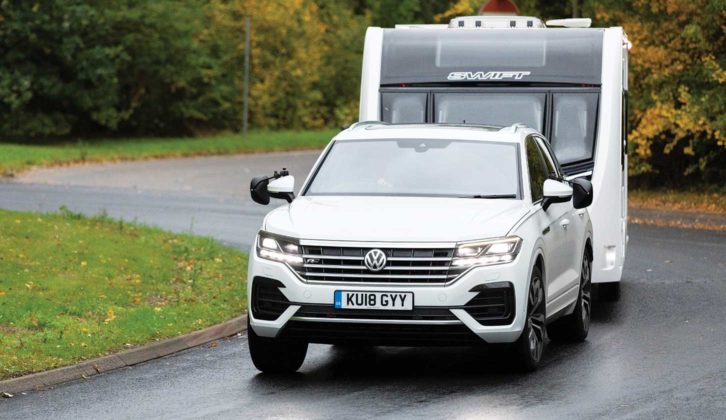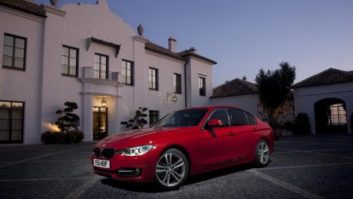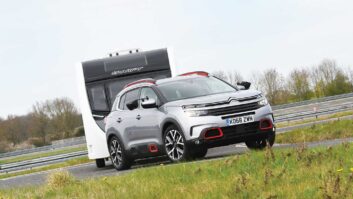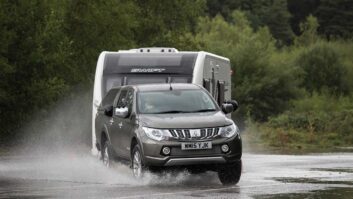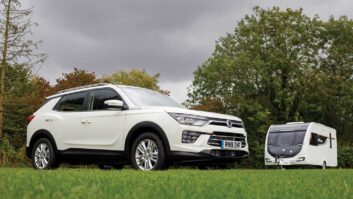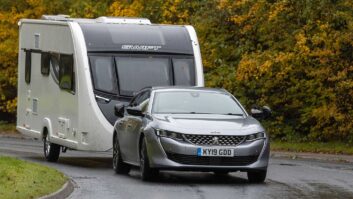Automotive suspension systems actually remained quite static throughout most of the development of the car.
In fact, the humble leaf spring is still being used today on the rear axle of almost all the latest ‘lifestyle’ 4WD pick-ups. This is simply the best tool for the job: strong, able to withstand large differences in loading and easy to repair in the field, because despite their chrome faces and leather interiors, these are developing-world market vehicles underneath.
The coil spring has been around since before World War II, mainly in high-performance or high-priced passenger cars, but its use still saw it mounted, predominantly on a rigid axle, at the rear of the car at least.
For the caravanner, this was potentially the best recipe throughout most of the 20th century: the spread of loading across the rigid or ‘live’ axle – best known in rear-wheel-drive formats – and the superior ride comfort afforded by coil springs, compared to leaf springs.
Independent rear suspension made for much better handling, but was less happy at heavy noseweights. While the majority of the world’s car makers were content with these incremental developments, one of them was not, its radical thinking being both its design keynote and its Achilles heel: Citroën.
From the interconnected front-to-rear mechanical springing found in the original 2CV, Citroën developed a full gas-hydraulic (hydropneumatic) system in the 1950s, first seen on the hugely advanced DS19.
Not only did this provide incredible ride comfort, but by pumping fluid in at a greater pressure to respond to increased loads, it would self-level with a heavy boot load or trailer noseweight.
Citroën would continue to refine this through subsequent models, even pairing it with four-wheel drive for a while in the BX, making the ideal caravanner’s estate tow car, and all this some years before the term ‘SUV’ ever entered the automotive vocabulary.
Spring is in the air
The fluid gas system had a less successful outing in the Austin Allegro and 18/22 Princess models. Called Hydragas, this was a ‘passive’ system without a pump, so did not self-level under increased loads.
Some years later, the penny dropped for car designers, when they adopted HGV and bus suspension media with the air spring. Late Mk1 (LSE) Range Rovers did it first on rigid axles, then the Audi Allroads, Mercedes-Benz ML and everyone else joined in.
For towing it’s a joy, variable ride height for rough CL fields, self-levelling for maximum noseweight and with the solo car, reduced ride height at speed for better aerodynamics and improved mpg.
Latterly, one more facet to the suspension has returned. Four-wheel steering appeared in the 1980s on the Honda Prelude, Mitsubishi paired it with 4WD in the Gallant, winning rallies but not sales, and Renault had a go with the Laguna coupé in the late 2000s.
Now it’s back for good with the Range Rover, VW Touareg (see our review of a 2018 VW Touareg), various Bentleys and Porsches. It tightens the turning circle for parking and has the effect of shortening the wheelbase for easy caravan reversing.
- We share our top tips for towing a caravan in winter
Top tips
- Be careful lowering air suspension when parked: exhaust pipes can hit high kerbs. By its nature, air suspension is going to be worse than coil springs at dealing with potholes. This is something drivers need to be especially aware of, as pothole-related breakdowns rose by 33% in 2023.
- Very gradual leaks can occur in air springs; the car should rise level when the engine starts, like a hydropneumatic Citroën.
- Rear-wheel steering only tightens the turning circle at low speed and near-full lock, with the rear wheels turning in the opposite direction to the fronts, to prevent twitchiness on motorways. In more modern systems, rear wheels turn in the same direction as front wheels at higher speeds, to further aid stability.
If you’ve enjoyed reading this article, why not get the latest news, reviews and features delivered direct to your door or inbox every month. Take advantage of our brilliant Practical Caravan magazine SUBSCRIBERS’ OFFER and SIGN UP TO OUR NEWSLETTER for regular weekly updates on all things motorhome related.
